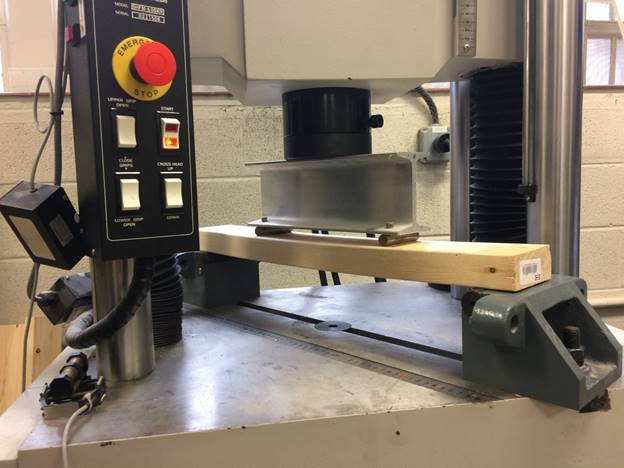Tests on Wood
Source: Roberto Leon, Department of Civil and Environmental Engineering, Virginia Tech, Blacksburg, VA
Wood is a ubiquitous material that has been used in construction from the earliest times. Wood is a renewable, sustainable material with great aesthetic value. Today, there are probably more buildings constructed with wood than any other structural material. Many of these buildings are singlefamily residences, but many larger apartment buildings, as well as commercial and industrial buildings, also use wood framing.
The widespread use of wood in construction has appeal from both an economic and aesthetic basis. The ability to construct wood buildings with a minimal amount of equipment has kept the cost of woodframe buildings competitive with other types of construction. On the other hand, where architectural considerations are important, the beauty and warmth of exposed wood is difficult to match with other materials.
The objectives of this experiment are to conduct tensile and compressive tests on three types of wood to investigate their stress-strain behavior, and to conduct a four-point bending test on a wood beam to ascertain its flexural performance. In a four-point bending test, a simply-supported beam is loaded with two equal point loads at its third points, resulting in a central portion with constant moment and zero shear. This is an important test because wood structural elements are often used in floor systems and are thus primarily loaded by bending stresses.
Compression Test
- Obtain nominal 3-1/2" compression cube specimens of three different woods (Southern pine, spruce, and oak for example). The cubes can be cut from a 4x4 section but should be clear wood. Ensure that the surfaces are to be parallel to one another. One set of specimens should be tested with the load applied parallel to the grain, and the other set of specimens should be tested with the load applied perpendicular to the grain. The number of test repetitions within a set depends on the desired
The compression, tension, and bending test results are summarized in Table 1. As shown consistently by all results, oak is the strongest wood, followed by spruce and southern pine.
Table 1: Wood testing summary
















